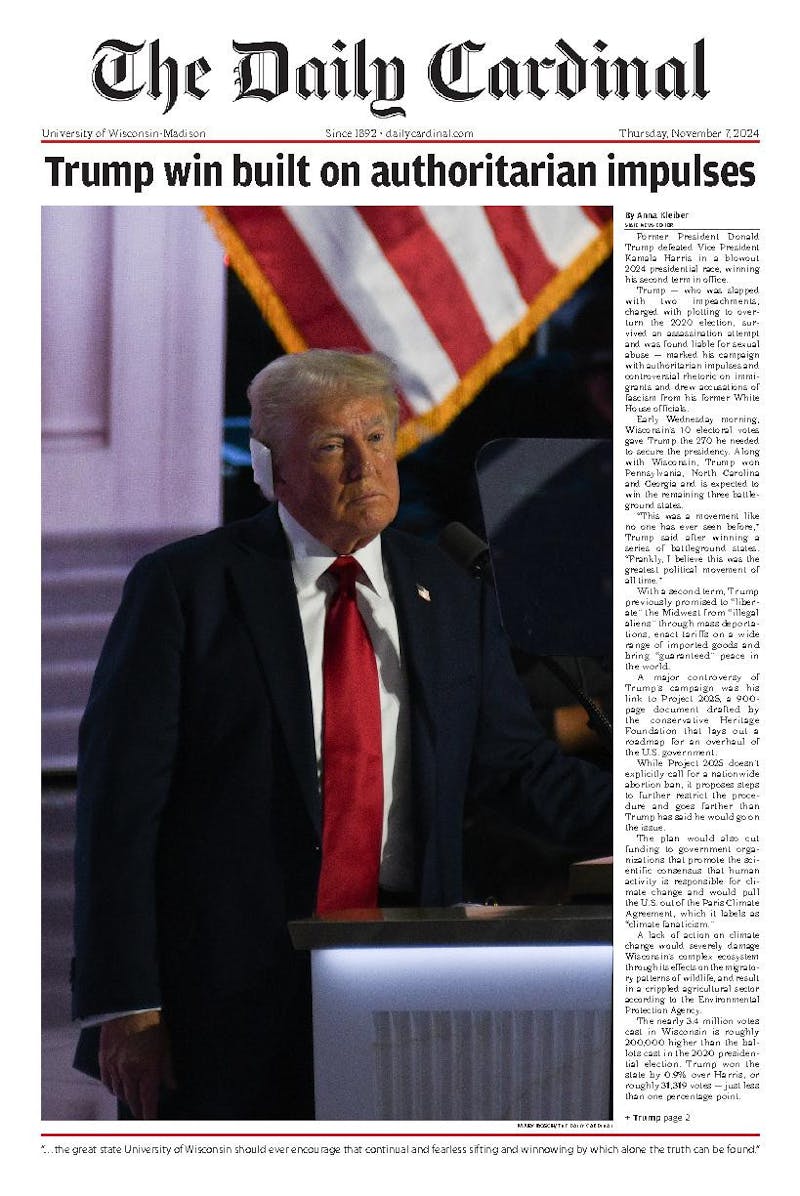The number of farmers in the U.S. fell just under 3.2 million in 2012, a 4-percent decrease in the industry from five years prior — and only 14 percent of those farms are run by women
But as that number shrinks around the nation, woman-lead organizations are searching for women to push agricultural innovation and tackle leadership positions.
“Not only do women make great farmers, but they also bring innovation, new ideas and hard work into this industry,” said Association of Women Agriculture Media Relations spokesperson Emily Matzke.
Between 2015 and 2020, there will be an average of 57,900 annual openings for graduates with bachelor’s degrees in food, agriculture, renewable natural resources and the environment, according to a report from the U.S. Department of Agriculture and Purdue University.
Lisa Kivirist, the endowed chair in Agricultural Systems at the University of Minnesota, believes this provides women an opportunity to take on leadership roles like never before.
“We need more women in agriculture in leadership positions, amplifying our collective voices and truly starting to change the food system,” Kivirist said. “I’m very excited about and hopeful for the number of women farmers currently stepping up to running for elected office.”
The 2012 Census of Agriculture found that nearly one million women are farmers, which is 30 percent of farmers nationwide.
“Representation is important in agriculture. Furthermore, leadership roles play an important part in representation on and off the farm,” said Diane Cullo, the director of the USDA’s Office of Partnerships & Public Engagement. “The USDA has worked to ensure that the membership of committees and boards which advise USDA are diverse and include more women.”
For women environmentalists and farmers around the nation, the time is now to reach for leadership roles and represent the agricultural industry.
The Women in Agriculture Mentorship Network — a product of the USDA’s efforts to maximize a female presence in the agricultural industry — includes farm groups, universities
Together, they create an open dialogue about the role of women in the future of agriculture through blog posts, events
The USDA subsidizes a variety of programs that support roles for women in agricultural careers. Many programs around the Midwest, including Soil Sisters and FarmHer, are leading events to promote women pursuing careers in agricultural fields.
Soil Sisters is a weekend-long culinary event led by over 20 women farmers from Green County. It acts as the finale of the Wisconsin Women in Sustainable and Organic Agriculture Week, developed by Gov. Scott Walker.
“This event has grown to be the largest women-farmer-led event of it’s kind in the country,” Kivirist said.
The event includes various workshops, tours and culinary events inviting the public to farms across the area to highlight the stories of women in agriculture.
“We aim to amplify and celebrate the stories of women farmers successfully running a diversity of businesses and prioritizing local communities and hopefully inspire younger women to consider careers in agriculture,” Kivirist said.
Kivirist feels that women bring a different take on agricultural collaboration and innovation than men have been able to do thus far.
“With the overall decline in the number of farmers, we need more new farmers, period,” Kivirist said. “Women
Last fall, FarmHer, an organization working to create a dialogue between female farmers around the U.S., visited UW-Madison in an event to showcase the opportunities for young women in agriculture and connect them with agricultural professionals.
For Lexi Marek, communication manager for FarmHer Inc., this was the reason she joined the organization.
“I started these events as an intern for FarmHer because I thought that connecting with professionals as a student would be helpful for my future and if I thought that, I was sure my peers would benefit from it as well,” Marek said.
FarmHer connects women farmers by sharing photographs and stories whether it be at a public event, on the farm or written in a blog.
“FarmHer shines a light on women in agriculture,” Marek said. “By reminding women that they are important in the industry and updating the image to include everyone that is actually involved, it makes the gender differences less of a challenge and continues to make women in agriculture the norm.”
In
“There have always been opportunities for women in agriculture and there have always been women in agriculture, yet when most people think of farming, they usually think of men,” Marek said.
The Association of Women in Agriculture shares similar goals, especially looking at a place for women in agricultural fields.
“On campus AWA provides
AWA is a UW-Madison organization that centers around three key pillars — professionalism, social activities
AWA helps members prepare for work in agricultural fields and improves communication between women and agricultural professionals, according to Griswold. The organization also provides housing on campus, scholarships and employment assistance for its members.
According to Mariah Martin, the vice president of the AWA, the opportunities to learn more about prospective career paths and programs
“Now more than ever, women are encouraged to have careers in agriculture, and are provided countless opportunities through professional development, education
With the small amount of women farmers around the U.S., it’s important to Kivirist that they are able to interact with the aim of helping people connect with how their food is grown.
“It can be extremely isolating to be a woman farmer,” Kivirist said. “It helps so much to connect with and get to know other female growers in the area that share your priorities for growing our local food system and land conservation.”






